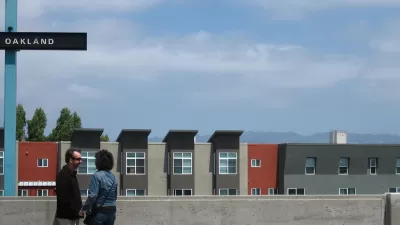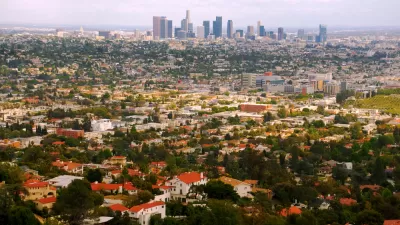Hundreds of thousands of Black Californians are moving away from urban areas, opting for the promise of abundance and opportunity offered by suburban communities, a trend referred to as "California's Black exodus."

Since the late 1980s, 275,000 Black Californians have moved away from expensive coastal cities like San Fransisco, Oakland, Los Angeles, and Compton, in a shift that Lauren Hepler describes as "California's Black exodus." In large numbers, ex-city dwellers have sought the opportunity and security of suburban communities in areas like California's Central Valley, the Inland Empire, and the San Joaquin-Sacramento Delta. Hepler points out that those who move to new cities face a different set of challenges and opportunities than those they left behind. "While a version of this geographic scramble is playing out for working and middle-class people of all races, the distinct obstacles that Black residents encounter in new communities raise the question: How far do you have to go today to find opportunity — and are some things ever really possible to leave behind?" writes Hepler.
As larger numbers of Black Californians make move from city to suburb, new forms of discrimination have emerged. Predatory lending practices and job discrimination are still unfortunate aspects of everyday life in the new hometowns of Black Californians. According to associate professor of geography and urban planning at Arizona State University Deirdre Pfeiffer, in some communities, the trend of upward mobility, opportunity, and security of experience during the "Black flight" in the '80s and '90s has not continued. Now, at the intersection of pandemic anxiety, political discord, and a profound wave of protests reckoning with systemic racism in the United States, "at issue is whether these overlapping crises will accelerate California’s Black exodus or force a reckoning both inside and outside major cities," says Hepler.
FULL STORY: The hidden toll of California’s Black exodus

Alabama: Trump Terminates Settlements for Black Communities Harmed By Raw Sewage
Trump deemed the landmark civil rights agreement “illegal DEI and environmental justice policy.”

Planetizen Federal Action Tracker
A weekly monitor of how Trump’s orders and actions are impacting planners and planning in America.

The 120 Year Old Tiny Home Villages That Sheltered San Francisco’s Earthquake Refugees
More than a century ago, San Francisco mobilized to house thousands of residents displaced by the 1906 earthquake. Could their strategy offer a model for the present?

In Both Crashes and Crime, Public Transportation is Far Safer than Driving
Contrary to popular assumptions, public transportation has far lower crash and crime rates than automobile travel. For safer communities, improve and encourage transit travel.

Report: Zoning Reforms Should Complement Nashville’s Ambitious Transit Plan
Without reform, restrictive zoning codes will limit the impact of the city’s planned transit expansion and could exclude some of the residents who depend on transit the most.

Judge Orders Release of Frozen IRA, IIJA Funding
The decision is a victory for environmental groups who charged that freezing funds for critical infrastructure and disaster response programs caused “real and irreparable harm” to communities.
Urban Design for Planners 1: Software Tools
This six-course series explores essential urban design concepts using open source software and equips planners with the tools they need to participate fully in the urban design process.
Planning for Universal Design
Learn the tools for implementing Universal Design in planning regulations.
Clanton & Associates, Inc.
Jessamine County Fiscal Court
Institute for Housing and Urban Development Studies (IHS)
City of Grandview
Harvard GSD Executive Education
Toledo-Lucas County Plan Commissions
Salt Lake City
NYU Wagner Graduate School of Public Service





























